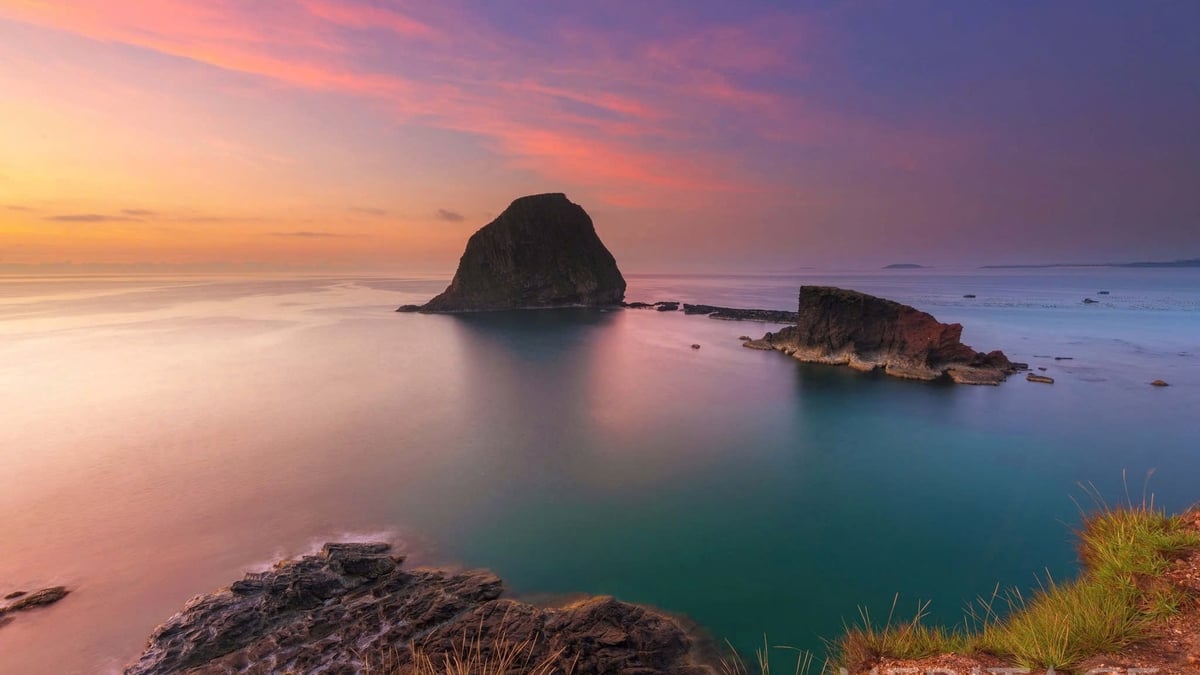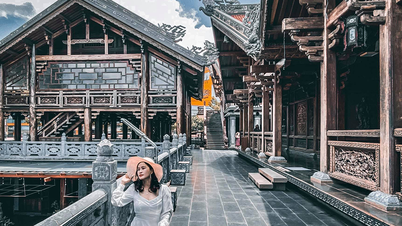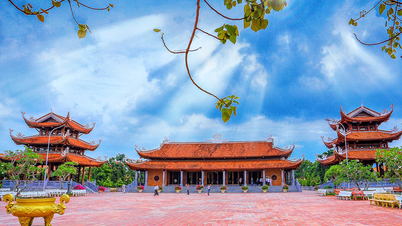UNESCO recognized 9 world natural and cultural heritages in Vietnam, of which Ha Long - Cat Ba stands out for its natural beauty; Hue and Hoi An are attractive for their cultural heritage; Trang An combines natural and cultural values.
On September 16, the UNESCO World Heritage Committee recognized Ha Long Bay - Cat Ba archipelago as a world natural heritage. Thus, Vietnam now has 3 natural heritages, 5 cultural heritages, and 1 mixed heritage.
According to the Department of Cultural Heritage, Ha Long Bay - Cat Ba archipelago was recognized by UNESCO because it contains many areas of natural beauty, including limestone islands covered with vegetation and limestone pinnacles rising above the sea and related karst features such as domes and caves. The spectacular untouched landscape of the vegetation-covered islands, salt lakes, limestone pinnacles with steep cliffs rising above the sea is also part of the reason.
"Ha Long Bay - Cat Ba archipelago is considered a geological museum, containing heritages with outstanding global values. This place witnessed the characteristic changes in the history of the development of the Earth", quoted from the Department of Cultural Heritage. Photo: Tran Dat

In addition to the new title awarded on September 16, Ha Long Bay is also a world natural heritage recognized by UNESCO twice before. In 1994, the bay was recognized as a natural heritage with outstanding global aesthetic value and became the first natural heritage of Vietnam to be honored. In 2020, Ha Long Bay was recognized for the second time as a world natural heritage, but this time according to the criteria of geological and geomorphological values.
Located in the Northeast region, including the sea area of Ha Long city, Cam Pha and part of Van Don island district, Ha Long Bay has a total area of over 1,550 km2 with 1,969 large and small islands. The world heritage site has an area of 434 km2 including 775 islands, like a triangle with three vertices: Dau Go island (west), Ba Ham lake (south) and Cong Tay island (east), according to the National Tourism Administration. Photo: Pham Huy Trung

Phong Nha - Ke Bang National Park in Quang Binh province has been recognized by UNESCO twice. In 2003, Phong Nha - Ke Bang was recognized for the first time as a heritage site based on the criteria of outstanding geological and geomorphological value. In July 2015, this place was recognized for the second time based on two criteria: "being an outstanding example representing ecological processes in the evolution and development of terrestrial ecosystems" and "possessing the most significant natural habitat for biodiversity conservation".
In 2015, the World Heritage Committee approved the expansion of the Park from 85,754 hectares to 123,326 hectares. Photo: Hoang Tao

Trang An complex was recognized by UNESCO as a world cultural and natural heritage, becoming the first mixed heritage in Vietnam in 2014. Located in Ninh Binh province, in the south of the Red River Delta, Trang An scenic complex includes 3 main conservation areas: Hoa Lu Ancient Capital Special National Monument; Trang An - Tam Coc - Bich Dong Scenic Landscape Special National Monument and Hoa Lu Special-use Forest.
The total area of the complex is 4,000 hectares, occupying the entire Trang An limestone block and surrounded by a buffer zone of 8,000 hectares, consisting mainly of rice fields. Photo: Ngan Duong

UNESCO recognized the Ho Dynasty Citadel in Thanh Hoa as a world cultural heritage in June 2011.
As the capital of the Ho Dynasty, the citadel was built by Ho Quy Ly in 1397, also known as Tay Do to distinguish it from Dong Do (Thang Long - Hanoi). After building the citadel, Ho Quy Ly moved the capital from Thang Long to Tay Do. However, the Ho Dynasty only existed for 7 years (from 1400). Photo: Le Hoang

The Central Sector of the Imperial Citadel of Thang Long, Hanoi, was recognized by UNESCO as a world cultural heritage in August 2010. According to the then Vice Chairwoman of the Hanoi People's Committee, Ms. Ngo Thi Thanh Hang, the Imperial Citadel has been the center of successive powers of Vietnam for more than a thousand years of history and is a unique testament to the evolution of Vietnamese civilization in the history of the development of a monarchical state in Southeast Asia. The Central Sector of the Imperial Citadel of Thang Long - Hanoi is a place that bears the mark of cultural values and events of global significance.
The outstanding global values of the heritage site are recognized by three outstanding features: The length of cultural history; The continuity of the heritage as a center of power; Rich layers of relics. Photo: Huong Chi

The ancient town of Hoi An is connected to the East Sea through the Dai Gate, bordering Duy Xuyen and Dien Ban districts, 20 km from Da Nang, and was recognized by UNESCO as a world cultural heritage in 1999. Before the 17th century, Hoi An traded with Da Nang via the Co Co River. Currently, this is the most popular tourist destination in Quang Nam province. Photo: Dac Thanh

The Complex of Hue Monuments, built from the early 19th century to the first half of the 20th century, became a world cultural heritage in 1993. The structure stands out with three walls in order from largest to smallest: the Capital City, the Imperial City and the Forbidden City.
The Imperial Citadel is an important structure, including a defense area, a grand ceremony area, a shrine area... located in the middle of a large natural space. After nearly 2 centuries and witnessing many important historical events of the nation, Ngo Mon Gate still exists, considered an outstanding ancient architecture. Photo: Nguyen Trung Au

My Son relic site in Duy Phu commune, Duy Xuyen district, Quang Nam province was recognized by UNESCO as a world cultural heritage in 1999. Built by King Bhadravarman in the 4th century and completed in the late 13th century, early 14th century under the reign of King Che Man, My Son is a complex of more than 70 temples and towers with many architectural and sculptural styles typical of each historical period of the Champa kingdom.
Most of the architecture and sculptures at My Son are influenced by Hinduism. The temples and towers mostly face the east, the direction of the rising sun, the abode of the gods; except for a few towers facing the west or both east and west, expressing the thoughts of the kings towards the afterlife after they were deified and to show their nostalgia for their ancestors, according to the Quang Nam Province Electronic Information Portal.
In addition to the 9 natural and cultural world heritages mentioned above, Vietnam also has many intangible cultural heritages and documentary heritages recognized by UNESCO such as Nguyen Dynasty Woodblocks, Hue Royal Court Music, and tug-of-war rituals.
According to vnexpress.net
Source





![[Photo] A delegation of 100 journalists from the Vietnam Journalists Association visits the soldiers and people of Truong Sa island district.](https://vphoto.vietnam.vn/thumb/1200x675/vietnam/resource/IMAGE/2025/5/30/0984a986227d4e988177f560d2e1563e)
![[Photo] Journalists moved to tears at the Memorial Service for the soldiers who died in Gac Ma](https://vphoto.vietnam.vn/thumb/1200x675/vietnam/resource/IMAGE/2025/5/30/9454613a55c54c16bf8c0efa51883456)




























![[Photo] Prime Minister Pham Minh Chinh attends the event "Digital transformation of the banking industry by 2025"](https://vphoto.vietnam.vn/thumb/1200x675/vietnam/resource/IMAGE/2025/5/29/0e34cc7261d74e26b7f87cadff763eae)


























































Comment (0)